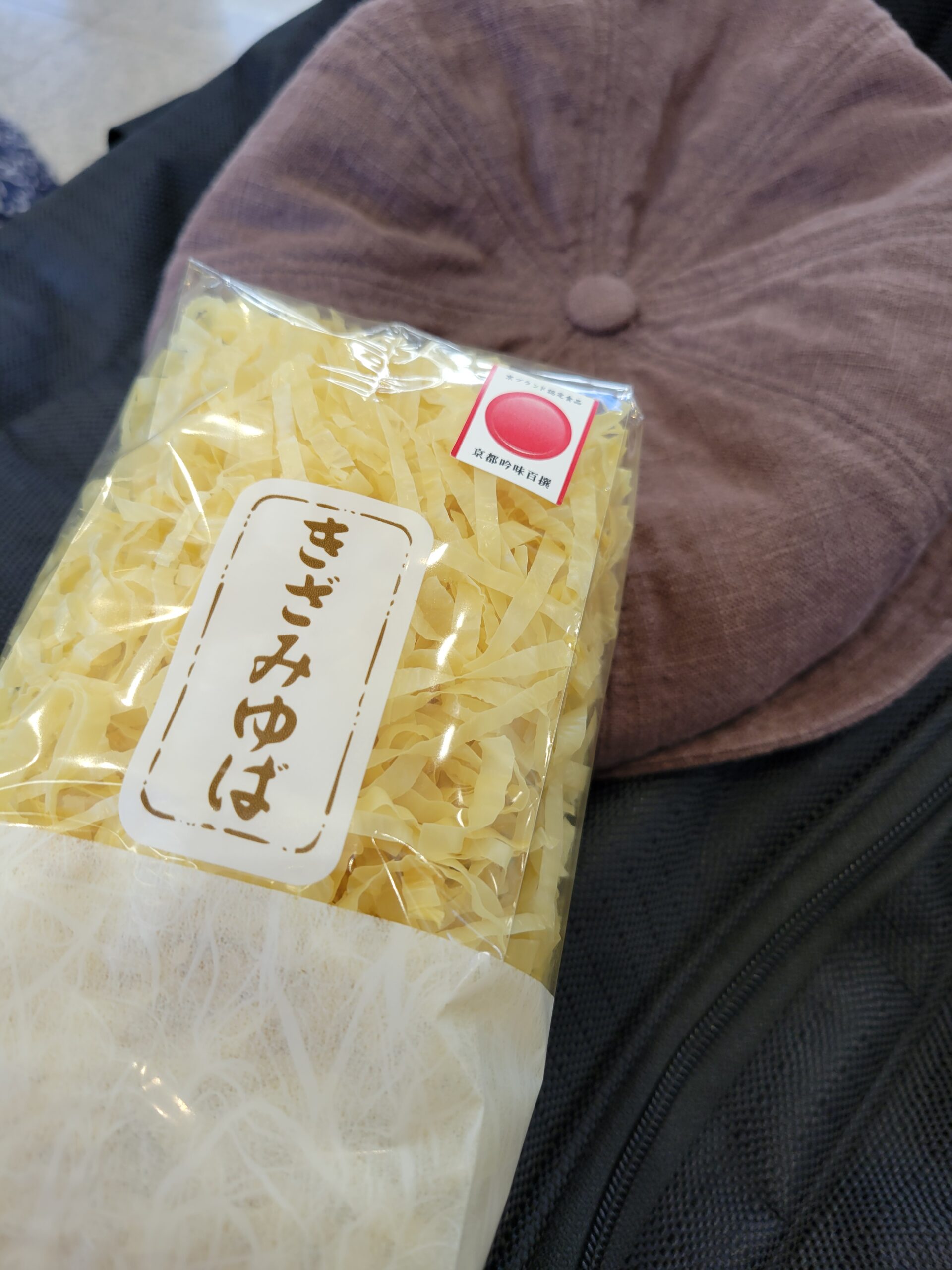京都と湯葉の歴史 / The History of Kyoto and Yuba
精進料理は、
主に植物性の食材を中心に構成される食事スタイルで、
日本の仏教に由来しています。
精進料理がガン発症に与える影響について、
医学的な観点からいくつかのポイントを挙げて
解説します。
1. 食材の栄養素
精進料理には、野菜、豆腐、穀物、海藻など、
さまざまな植物性食材が含まれています。
これらの食材は、
以下のような栄養素を豊富に含んでいます。
食物繊維:
野菜や穀物に多く含まれ、
消化を助けるだけでなく、
大腸がんのリスクを低下させる可能性があります。
抗酸化物質:
果物や野菜に含まれるビタミンCやE、
ポリフェノールなどの抗酸化物質は、
細胞の酸化ストレスを軽減し、
がん細胞の発生を抑制する役割を果たします。
フィトケミカル:
植物に含まれる化学物質で、
特にカラフルな野菜や果物に多く含まれ、
抗癌作用があるとされています。
2. 繊維と腸内環境
精進料理は食物繊維が豊富なため、
腸内環境の改善に寄与します。
健康的な腸内細菌は免疫系を強化し、
炎症を抑える作用があるため、
これがガンの予防に役立つと考えられています。
特に、
大腸がんのリスクを低下させることが
示唆されています。
3. 動物性脂肪の制限
精進料理では、
肉や魚といった動物性食品を制限します。
一部の研究では、
動物性脂肪の摂取が特定のガン(例えば、乳がんや大腸がん)のリスクを増加させる可能性があることが示されています。
精進料理を取り入れることで、
これらのリスクを軽減できるかもしれません。
4. 心理的・精神的な効果
精進料理を実践することは、
食事に対する意識や生活習慣の改善を促すことがあり、
これがストレスの軽減や健康なライフスタイルの維持に寄与する可能性があります。
ストレスは免疫系に悪影響を与え、
ガンのリスクを高める可能性があるため、
心理的な健康も重要です。
5. 食事のバランス
精進料理は、
さまざまな食材を組み合わせて調理されるため、
栄養のバランスが良いことが多いです。
ビタミン、ミネラル、抗酸化物質をバランスよく摂取することで、
全体的な健康状態を向上させ、
ガンのリスクを低下させる効果が期待されます。
まとめ
精進料理は、
その特徴的な食材や調理法により、
ガン発症リスクを低下させる可能性があります。
ただし、
食事だけでなく、
生活習慣全体や遺伝的要因、
環境要因もがん発症に影響を与えるため、
精進料理を取り入れることが必ずしも全ての人に同じ効果をもたらすわけではありません。
健康維持のためには、
バランスの取れた食事とともに、
積極的な生活習慣が重要です。

湯葉(ゆば)は、
日本の伝統的な食材であり、
特に京都では高級な食材として親しまれています。
湯葉の歴史は古く、
仏教の精進料理として重宝されてきました。
京都は、長い間、日本の文化と宗教の中心地であり、
精進料理の発展と密接に関連しています。
湯葉は豆乳を加熱し、
表面にできる薄い膜をすくい取ったもので、
その繊細な食感と風味が特徴です。

湯葉は平安時代(794-1185年)には、
すでに貴族や僧侶の間で広まりました。
京都の寺院では、
精進料理の一環として湯葉が用いられ、
これが広く一般にも浸透するようになりました。
特に南禅寺は湯葉料理の名所として知られています。

Yuba, a traditional Japanese food, is highly esteemed as a delicacy, particularly in Kyoto.
The history of yuba is long, and it has been valued as an essential part of Buddhist vegetarian cuisine.
Kyoto has been a cultural and religious hub in Japan, closely linked with the development of vegetarian cuisine.
Yuba is made by heating soy milk and skimming off the thin layer that forms on the surface, known for its delicate texture and flavor.

By the Heian period (794-1185), yuba had already become popular among aristocrats and monks.
In the temples of Kyoto, yuba was used as part of shojin ryori, Japanese Buddhist vegetarian cuisine, and it gradually spread to the general populace.
Nanzenji Temple, in particular, is renowned for its yuba dishes.

湯葉料理レシピ / Yuba Recipe


湯葉はそのまでもいただけますが、
さまざまな料理に活用できます。
ここでは、簡単な湯葉の佃煮レシピをご紹介します。
材料:
– 湯葉: 100g
– 醤油: 大さじ3
– みりん: 大さじ2
– 砂糖: 大さじ1
– だし: 100ml
作り方:
1. 湯葉を食べやすいサイズに切ります。
2. 小鍋にだし、醤油、みりん、砂糖を入れて中火で加熱します。
3. 煮立ったら湯葉を加え、弱火で煮詰めます。
4. 水分が少なくなり、全体に味が絡んだら完成です。
Yuba can be enjoyed on its own or used in various dishes. Here, we introduce a simple yuba simmered in soy sauce recipe.
Ingredients:
– Yuba: 100g
– Soy sauce: 3 tablespoons
– Mirin: 2 tablespoons
– Sugar: 1 tablespoon
– Dashi stock: 100ml
Instructions:
1. Cut the yuba into bite-sized pieces.
2. In a small pot, combine dashi, soy sauce, mirin, and sugar, and heat over medium heat.
3. Once it starts boiling, add yuba and simmer over low heat.
4. Cook until the liquid reduces and the yuba absorbs the flavors. Serve warm.
この簡単な湯葉料理は、
京都旅行の思い出とともに家庭でも手軽に楽しめます。
/ This simple yuba dish can easily be enjoyed at home, bringing back memories of your visit to Kyoto.
平安時代の湯葉料理のレシピ / Recipe for Yuba Dishes from the Heian Period
平安時代(794-1185年)の湯葉料理は、
特に精進料理として重要な役割を果たしました。
この時代の料理は、
シンプルでありながら素材の味を引き立てるスタイルが特徴です。
以下に、
当時のスタイルを参考にした「湯葉の白和え」のレシピをご紹介します。
材料:
– 湯葉: 100g
– 絹ごし豆腐: 150g
– ほうれん草(または他の青菜): 50g
– みりん: 大さじ1
– 醤油: 大さじ1
– 塩: 少々
– いりごま: 大さじ1
作り方:
1. 下準備:
ほうれん草は湯がき、
冷水にさらして水を切り、
3~4cmの長さに切ります。
豆腐は水切りし、柔らかくつぶします。
2. 湯葉の準備:
湯葉を食べやすいサイズに切ります。
3. 混ぜる:
大きなボウルに、
つぶした豆腐、みりん、醤油、
塩を混ぜ合わせ、なめらかなペースト状にします。
4. 材料を加える:
続けて、湯葉とほうれん草を加え、
全体を優しく混ぜ合わせます。
5. 盛り付ける:
最後にいりごまを振りかけて、
器に盛り付ければ完成です。
During the Heian period (794-1185), yuba dishes played a significant role,
especially as part of shojin ryori (Buddhist vegetarian cuisine).
The cooking style of this era focused on simplicity while enhancing the natural flavors of the ingredients.
Here, we present a recipe for “Yuba with White Sesame Tofu” inspired by that period.
Ingredients:
– Yuba: 100g
– Silken tofu: 150g
– Spinach (or other green vegetables): 50g
– Mirin: 1 tablespoon
– Soy sauce: 1 tablespoon
– Salt: a pinch
– Roasted sesame seeds: 1 tablespoon
Instructions:
1. Preparation:
Blanch the spinach, then cool it in cold water and drain it.
Cut it into 3-4 cm pieces. Drain the tofu and mash it until smooth.
2. Yuba Preparation:
Cut the yuba into bite-sized pieces.
3. Mixing:
In a large bowl, mix the mashed tofu, mirin, soy sauce, and salt until you achieve a smooth paste.
4. Add Ingredients:
Gradually add the yuba and spinach to the tofu mixture, gently folding to combine.
5. Plating:
Finally, sprinkle the roasted sesame seeds on top and serve in a dish.
この「湯葉の白和え」は、
平安時代に食されていた料理スタイルを現代的にアレンジしたものです。
食材同士の調和が楽しめる、
シンプルでありながら豊かな味わいを堪能できる一品です。
/ This “Yuba with White Sesame Tofu” is a modern adaptation of dishes that may have been enjoyed during the Heian period.
It allows you to savor the harmony of the ingredients, presenting a simple yet rich flavor profile.
現代の湯葉料理のレシピと平安時代のレシピの比較 / Modern Yuba Recipe Compared to Heian Period Recipe
平安時代の湯葉料理は、
シンプルで厳選された材料を使用し、
素材の味を引き立てることに重点を置いていました。
一方、現代の湯葉料理は、
さまざまな食材や調理法を取り入れ、
より多様性のある味わいを楽しむことができます。
ここでは、
現代の「湯葉と野菜のカルパッチョ」のレシピを紹介し、平安時代の「湯葉の白和え」と比較します。
平安時代のレシピ:湯葉の白和え
材料:
– 湯葉: 100g
– 絹ごし豆腐: 150g
– ほうれん草: 50g
– みりん: 大さじ1
– 醤油: 大さじ1
– 塩: 少々
– いりごま: 大さじ1
特徴:
– シンプルな食材の使用と、
伝統的な調味料(醤油、みりん)
– 精進料理に適しており、修行僧や貴族に好まれる
– 材料の自然な風味を生かした調理方法
現代のレシピ:湯葉と野菜のカルパッチョ
材料:
– 湯葉: 100g
– アボカド: 1個
– トマト: 1個
– パプリカ: 1/2個
– オリーブオイル: 大さじ2
– レモン汁: 大さじ1
– 塩・こしょう: 適量
– バジル(または他のハーブ): お好みで
作り方:
1. 野菜の準備:
アボカド、トマト、パプリカを薄くスライスします。
2. ドレッシングの準備:
ボウルにオリーブオイル、レモン汁、塩、こしょうを入れて混ぜ合わせます。
3. 盛り付け:
大皿にスライスしたアボカド、
トマト、パプリカを並べ、
その上に湯葉を乗せます。
4. ドレッシングをかける:
準備したドレッシングを全体にかけ、
お好みでバジルをトッピングして完成です。
特徴:
– 多様な材料の使用および新たな調味料(オリーブオイル、レモン汁)
– 調理方法がフレッシュで見た目も楽しむことができるカルパッチョスタイル
– 食材の組み合わせによる新しい風味の発見が可能
Heian Period Recipe:
Yuba with White Sesame Tofu
Ingredients:
– Yuba: 100g
– Silken tofu: 150g
– Spinach: 50g
– Mirin: 1 tablespoon
– Soy sauce: 1 tablespoon
– Salt: a pinch
– Roasted sesame seeds:
1 tablespoon
Characteristics:
– Simple use of ingredients and traditional seasonings (soy sauce, mirin)
– Suitable for vegetarian cuisine, favored by monks and aristocrats
– Cooking methods that emphasize the natural flavors of the ingredients
Modern Recipe: Yuba and Vegetable Carpaccio
Ingredients:
– Yuba: 100g
– Avocado: 1
– Tomato: 1
– Bell pepper: 1/2
– Olive oil: 2 tablespoons
– Lemon juice: 1 tablespoon
– Salt and pepper: to taste
– Basil (or other herbs): to taste
Instructions:
1. Prepare the vegetables:
Thinly slice the avocado, tomato, and bell pepper.
2. Prepare the dressing:
In a bowl, mix olive oil, lemon juice, salt, and pepper.
3. Plating:
Arrange the sliced avocado, tomato, and bell pepper on a large plate and top it with yuba.
4. Dress the dish:
Drizzle the prepared dressing over the top and garnish with basil, if desired.
Characteristics:
– Use of diverse ingredients and new seasonings (olive oil, lemon juice)
– Fresh and visually
【絵本】ガンと闘う10歳の僕におきた奇跡
の書籍版はこちらから
☆☆☆☆☆☆☆☆☆☆☆☆☆☆☆☆☆☆☆☆☆☆☆☆
生き抜く力【ガンと闘う10歳の僕に起きた奇跡】|ほっし校長|note
жжжжжжжжжжжжжжжжжжжжжжжжжжжжжжжжжжжж



